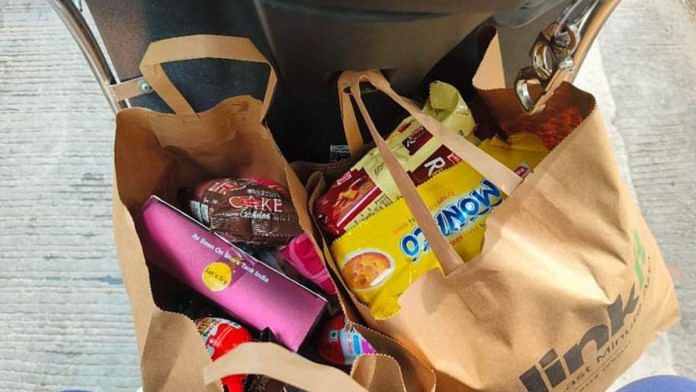Bengaluru: Sneha started a unique social experiment on her Activa scooty with a flimsy bag of chips, biscuits, and chocolates on a Sunday morning. She was all set to be a Blinkit delivery partner for the day in Indiranagar. She simply wanted to understand the operations behind the ambitious 10-minute promise of grocery delivery platforms.
“The other riders were surprised to see a woman at the onboarding store,” said the 23-year-old, who works as an associate product manager at Hopstack India—a digital warehouse platform in Bengaluru. Right behind the swanky office, lies Blinkit’s main partner store from where riders deliver items to customers within a 1-2 km radius. Sneha would always see this store on the way to her office.
Graduating as an electronic engineer in 2022, Sneha has multiple feathers in her hat. She wrote her first book in the same year titled 21-Year-Old Engineer But Not An Engineer: Anecdotes From Who Is Engineer. “Kept the book short and crisp, same as our day before exam notes. Don’t forget I am Engineer too.” Another example of her wit is her bio on X that says: “Yes, I have a full-time job,” – in case anyone thought otherwise.
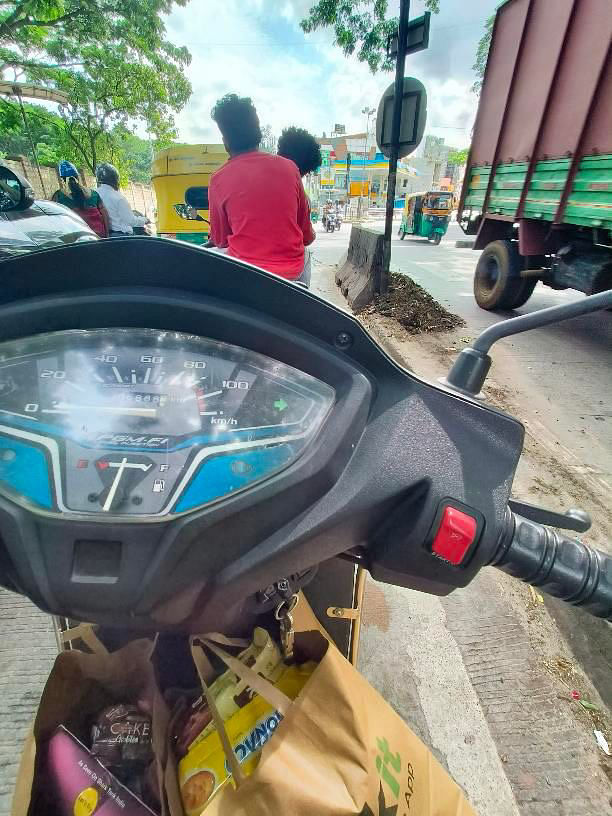
Her job at Hopstack is mainly related to product operations and inventory. Last Sunday, while interacting with her colleagues, Sneha realised that she wanted to learn more about the operational side of grocery delivery platforms.
“Blinkit is my go-to app,” she said, “but I always wondered how they could deliver in just 10 minutes. So, I decided why not try it myself?” She had never done something like this before.
The Blinkit’s app allows users to register as riders. However, on the page where one is supposed to enter their details, the illustration only shows male riders wearing the company’s jersey and sitting on their bikes. This struck Sneha.
“I don’t see anyone who looks like me here, basically there’s no representation of women,” she said. “Even if someone wants to be a rider, these illustrations will make them think twice.”
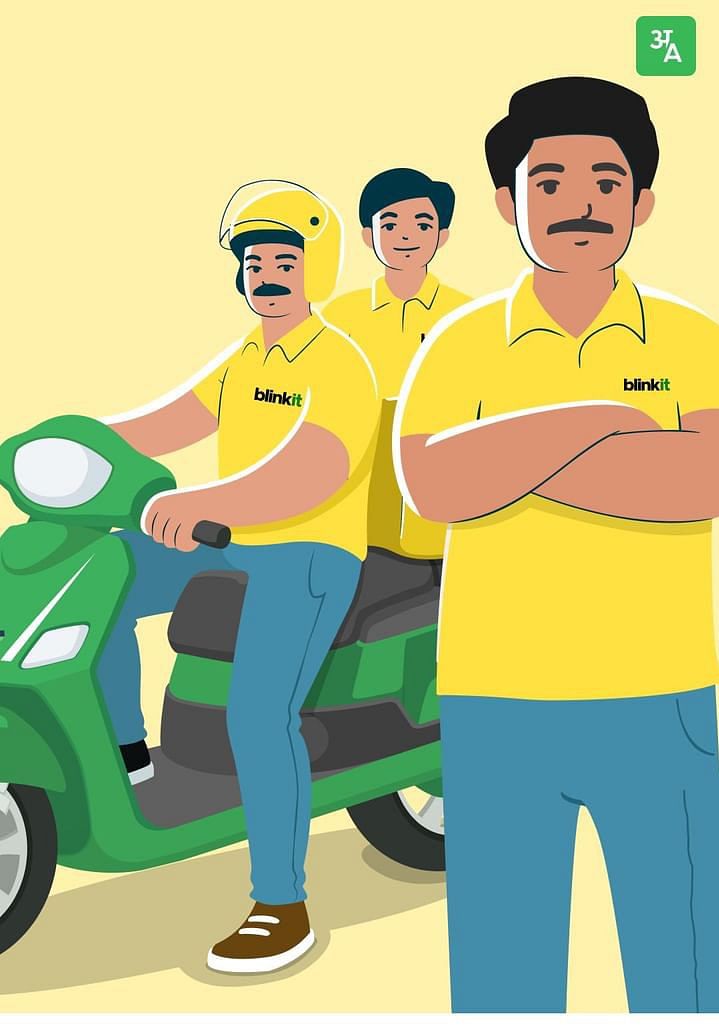
The whole process of becoming a partner is mainly concentrated on the app. Users are required to enter their name, phone number, location and details about their vehicle. But some key information is left out from the app’s side, Sneha said.
Apart from the onboarding fee, a user is also required to pay for insurance: they have a choice between two plans; pay the full amount of Rs 910 or Rs 99 in weekly installments. “Here, information is missing on why they are paying Rs 99,” Sneha pointed out, suggesting in a post on X that a video or informational document should be provided to explain this charge. Riders must then undergo offline verification, but the app does not specify which documents are required.
Because of her job at the digital warehouse firm, Sneha is familiar with the workings of the delivery platforms. And that is why she found the lack of transparency troubling.
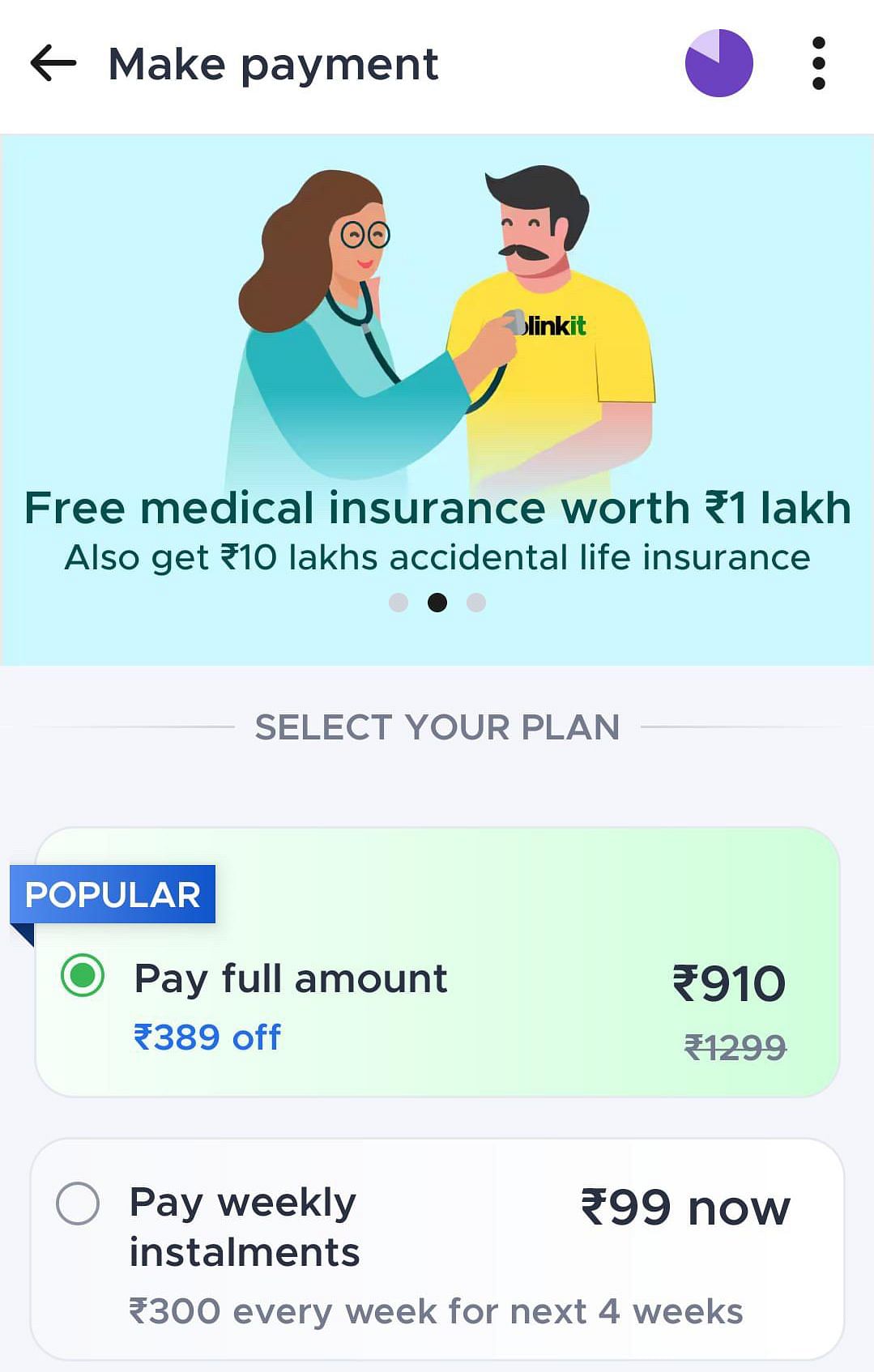
partner. But there isn’t any detailed information on what the partner is paying for | Blinkit app screenshot
“The app needs to be more informative for partners,” she said.
Also read: India’s Atmanirbharta push shouldn’t shrink economic diplomacy. ‘It must get bigger’
The pressure of 10-minutes
While waiting at the onboarding store, Sneha could only see male drivers around her. It was a surprise for them too to see Sneha, standing in her bright pink t-shirt and a nose ring and not the Blinkit jersey. “Many of them were curious as to why I was doing this,” she said. “But they helped me with putting the items in the bags.” She added that she felt safe in their company.
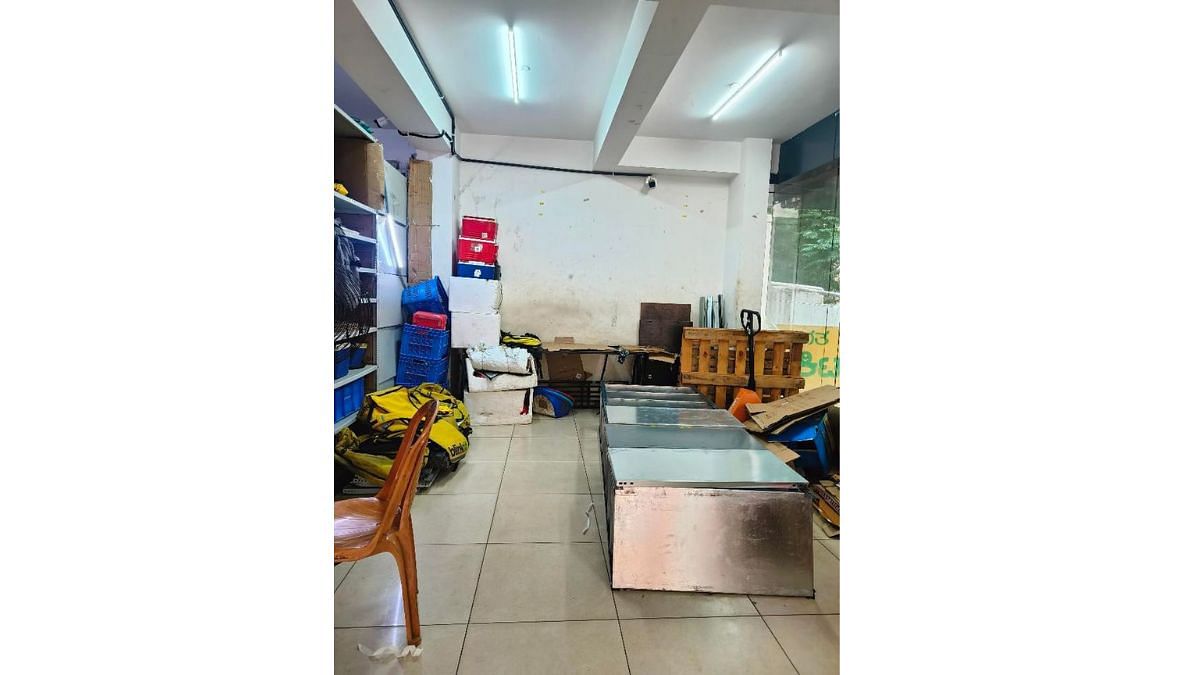
The store neither had a designated waiting area for the riders, nor a drinking water filter. With only one small fan in the room, it became suffocating during peak hours when delivery partners crowded the space. “The 10-minute system is specifically designed in a way so that the driver is ready to transport the package to the customer at the very second he/she picks up an order,” she said. “But yes, the pressure is surely there.”
It was a Sunday afternoon when Sneha left to deliver orders. Located in one of the busiest areas in Bengaluru, the distance between the Blinkit partner store and her delivery locations varied between 1-4 km. “But we all know how Bengaluru traffic is,” Sneha said, chuckling.
She hopped onto her Activa to reach the delivery locations, which to her surprise were sometimes only reachable via narrow lanes amid the multiple crossroads of Indiranagar, even though Google Maps was showing a straight road. As she tried to navigate the nooks and corners, she was stopped by the cops for taking a wrong turn. And then, a notification popped up on her screen that alerted her to a delay. “It was chaos at the store and then chaos on the roads…All of this prevented me from delivering in under 10 minutes,” she said.
The app lets the rider know that they are running late and asks them to provide a reason for the same. Until a reason is given, the rider can’t mark the order as ‘delivered’. “I provided a traffic jam as the reason and then the app was able to check whether the route I took was indeed busy as per my claims or not,” Sneha said.
Meagre returns
After delivering three orders and reaching home late evening, Sneha earned a total of Rs 80 – almost the same amount she spent on petrol for her scooty that day.
While registering on the app, she had received a message that said: “Dear partner, thanks for registering with Blinkit. Earn up to Rs 50,000 per month. Join now to get an extra bonus of Rs 2,000.” However, there were no instructions on how a partner could claim the bonus or any terms and conditions. “After I delivered a few orders, I just know how hard it is to earn Rs 50,000,” she said, calling the message a ‘false gimmick’.
https://x.com/itspsneha/status/1820067090516078863
Sneha posted a detailed play-by-play of her experience on X, which garnered over a million views and 350 retweets – unlike any of her other posts. Many of the users appreciated her elaborate feedback. “Well done on showing out the process. Also, as you rightly said earning 50k/month at the beginning itself gives kinda a false hope. I hope people are able to earn this much, but it all depends on the frequency of the deliveries and so many other factors,” Vivek Naskar, a software engineer, wrote.
Sneha was taken aback by the response she received to her tweet.
“I got through the day, put up this post and went to sleep…only to wake up and see all of this,” she said. Albinder Dhindsa, CEO of Grofers, also responded to her post. “Thanks for the feedback Sneha! Good points here. We will pick these up, fix and report back soon,” he wrote. Sneha now has over 2,500 followers on X.
Her customers were mostly empathetic about late delivery. “Maybe because they knew a woman was delivering their order, they didn’t make too much of a fuss,” she said.
Delivery executives across the country have often faced the ire of angry customers who either refuse to pay for late delivery or resort to verbal and sometimes physical harassment. In one such incident, a Swiggy delivery worker in Bengaluru was allegedly assaulted by four men for refusing to hand over the order for free in 2021.
A recent survey conducted by the People’s Association in Grassroots Action and Movements (PAIGAM) with the help of the Indian Federation of App-based Transport Workers (IFAT) showed that 41.5 per cent of delivery persons faced violence at work. And 64.3 per cent alleged that they did not get any support from aggregator companies when faced with violence. Additionally, 34.4 per cent of them earn less than Rs 10,000 monthly, especially after deducting their expenses of maintenance, challans, and EMIs among other charges.
“It’s been more than 10 minutes,” said an anxious Blinkit delivery, who was waiting for his customer on a Tuesday afternoon. “I hope they (the customer) don’t complain.”
When he learned about Sneha’s experiment, he had a smile on his face. “More people should do this to understand how we work,” he said on the condition of anonymity. He hasn’t taken a day off in a week and will only go back home after 10 pm.
To protect the rights of gig workers, Karnataka recently presented the draft of the platform-based gig workers (Social security bill and welfare) Bill 2024, which many have lauded. After Sneha’s experience, companies will also get to see what it’s like being a delivery partner for a day.
(Edited by Ratan Priya)



